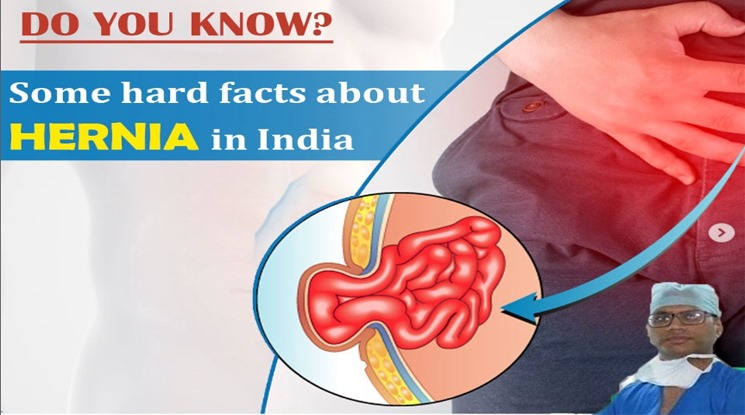
24 Aug,2023
User admin
Laparoscopic Ventral/Umbilical/Incisional Hernia Repair:
Ventral hernias are a common condition characterized by the protrusion of abdominal contents through a weakened area in the abdominal wall. Traditionally, open surgery was the primary method for repairing ventral hernias. However, with advancements in surgical techniques, laparoscopic ventral hernia repair has emerged as a preferred minimally invasive alternative.
Benefits of Laparoscopic Ventral Hernia Repair: Laparoscopic ventral hernia repair offers several advantages over traditional open surgery. Firstly, it involves smaller incisions, resulting in reduced post-operative pain, shorter hospital stays, and faster recovery times. The minimally invasive approach also leads to decreased wound complications, such as infections and incisional hernias. Additionally, laparoscopic repair allows for better visualization of the hernia defect and surrounding tissues, facilitating accurate placement of mesh reinforcement. The cosmetic outcome is also improved, as the smaller incisions result in minimal scarring. These benefits have made laparoscopic ventral hernia repair increasingly popular among patients and surgeons alike
Procedural Steps of Laparoscopic Ventral Hernia Repair: Laparoscopic ventral hernia repair involves several key steps, which are as follows
1. Anaesthesia: The patient is administered general anaesthesia to ensure a painless and comfortable experience during the procedure
2. Placement of Trocars: : Small incisions, typically 0.5-1 cm in size, are made away from the hernia site. Trocars are inserted through these incisions to create access points for the surgical instruments
3. Creation of Pneumoperitoneum: Carbon dioxide gas is introduced into the abdomen through one of the trocars, creating a working space for the surgeon by lifting the abdominal wall away from the organs
4. Visualization: A laparoscope, a thin tube with a camera at its tip, is inserted through one of the trocars, providing high-definition visuals of the hernia and surrounding tissues on a monitor
5. Reduction and Mesh Placement: The hernia sac and its contents (e.g., omentum or intestines) are carefully dissected and pushed back into the abdominal cavity
6. Defect Closure: The defect is then closed by non-absorbable suture by intra-abdominal suturing. This has shown to reduce the post-operative seroma formation and restores the abdominal wall. It is usually possible to close the defects of about 2-3 cm without any significant tension. Larger defects may need additional procedures.
7. Mesh Placement and Fixation: : A mesh, typically made of synthetic material, is inserted through one of the trocars and positioned over the hernia defect. The mesh provides reinforcement and prevents recurrence of the hernia. It is secured in place using sutures, staples, or specially designed fixation devices
8. Closure and Recovery: : Once the mesh is securely in place, the instruments and trocars are removed. The small incisions are closed with sutures or surgical tape. The patient is then transferred to the recovery area for monitoring before being discharged
Post-operative Care: After laparoscopic ventral hernia repair, patients are advised to follow specific guidelines for optimal recovery. These may include
1. Pain Management: After laparoscopic ventral hernia repair, patients are advised to follow specific guidelines for optimal recovery. These may include
2. Physical Restraint: Strenuous activities, heavy lifting, and intense exercises should be avoided for a few weeks to allow the surgical site to heal properly
3. Wound Care: Patients should keep the incision sites clean and dry to minimize the risk of infection. Regular follow-up appointments with the surgeon are recommended to monitor the healing process
4. Diet and Bowel Movements: : A fibre-rich diet and adequate hydration help prevent constipation, which can strain the surgical sit
Conclusion: Laparoscopic repair of ventral / umbilical / incisional hernia gives the best possible short- and long-term results with minimum pain and early return to job. It is usually the most sought-after treatment by ventral / umbilical / incisional hernia patients and should be done by trained surgeons at centres maintaining strict asepsis in their operation theatres.



